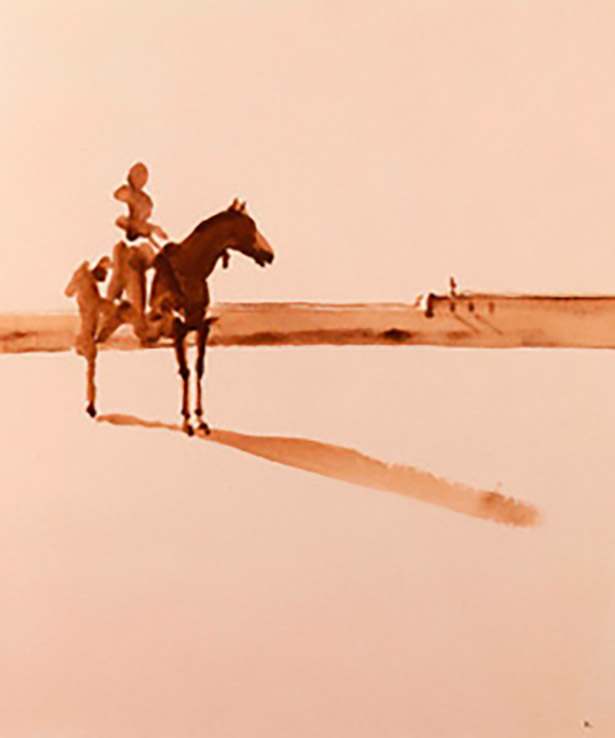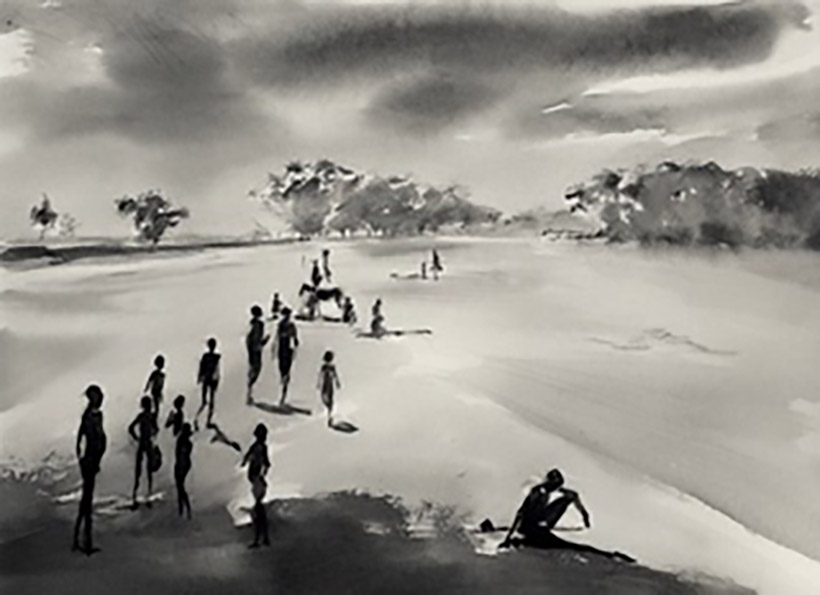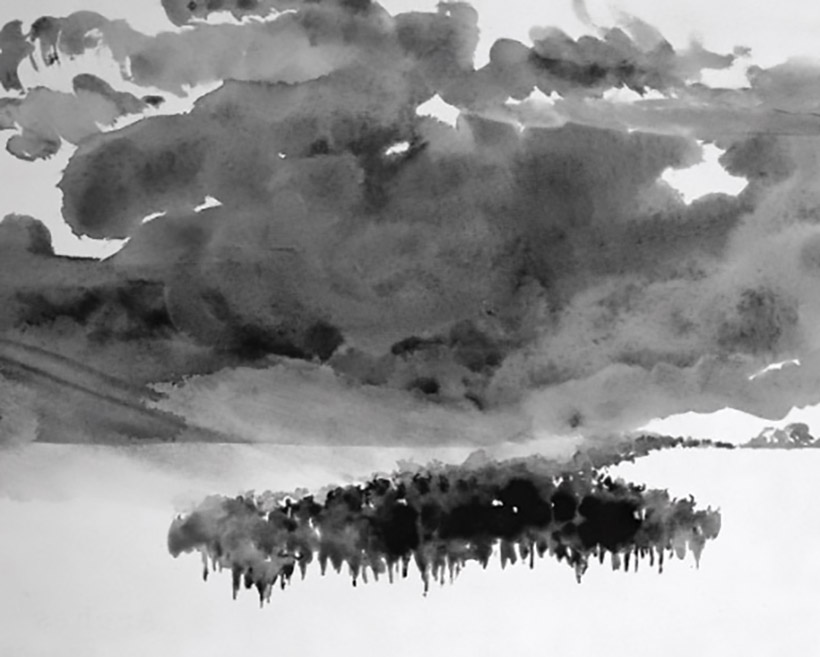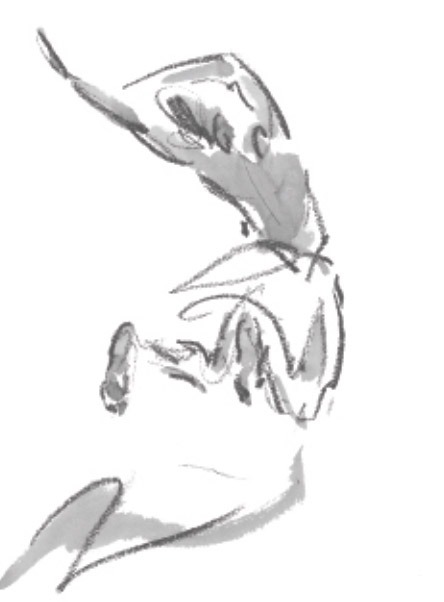New York Exhibitions
Coe Kerr Gallery, New York 1979 – 1991
Coe Kerr Gallery for a quarter of a century was one of New York’s most fashionable art dealers. During this period the gallery handled great works of art, most notably Mary Cassatt, John Singer Sargent, and its famous association with the Wyeth family and Andy Warhol. Kelly Anderson added Jonathan Kenworthy, the only sculptor and an Englishman at that, to their list of artists.
Our gallery is privileged and thrilled to welcome Jonathan, his work, his legion of existing admirers and, I predict, a host of new friends. In our estimation Jonathan’s art is exquisite, as much a personal joy as the gregarious and exuberant artist is himself. – O Kelly Anderson Jr.
In 1977, on my way to Nepal to see tiger, I stopped off in Afghanistan. Here, beyond the legendary mountains of the Hindu Kush, I found a captivating world. This is a landscape where the horse is still an integral part of life. The Uzbeks, the Turkomans and the Mongols who live in the Northern Provinces of Afghanistan show the same independence of spirit as the desert nomads of Northern Kenya. This combines perfectly with the wild, flowing movement of their horses when they ride out to play their game.
Buzkashi is a horse game from the age of Genghis Khan, the Mongol conqueror who swept through Asia 700 hundred years ago. In it the mounted hordes showed their ferocity, their horses and their riding skills. The game is still played by the tough horsemen on the dusty steppes beyond the Hindu Kush. Over the years it has grown in popularity and acquired social importance.
Using spirited stallions, derived from Mongol, Persian and Arab stock, Afghan landlords and horse breeders compete for personal standing through the mettle and agility of their animals.

Horsemen of the Hindu Kush
Coe Kerr Gallery, 1979
To ensure the best performances from their horses, expert riders called ‘chapandaz’ are employed. The finest of these are regarded as national heroes and are renowned for their feats of courage and skill.
The horsemen have to snatch an object from the ground, carry it over a two-mile course and return to deliver it into a target circle. The quarry is the carcass of a goat or a calf. Extreme violence abounds to prevent the riders in possession from reaching the target. The horses are trained to kick and bite. Hooves, whips, arms and booted legs flail mercilessly in melees involving up to one hundred and fifty riders. Men and horses combine into the modern equivalent of centaurs creating whirls of movement in what must be the roughest sport in the world. – Jonathan Kenworthy 1979.
I have always admired the natural dignity and elegance of the nomads. They have been shaped by adversity and by their ceaseless roaming in a landscape of vast horizons. Their reality is a continual search for grazing for their animals and a daily trek to fetch water. The desert sun has no pity, and there is no refuge for the weak. Yet these people have survived for thousands of years. They have tolerance of pain and hardship and a strong sense of kinship. At times they look so slender that I feel the swirling wind might blow them away. But they have the endurance to walk for whole days without rest, and they cling to their way of life with astonishing stoicism in a hostile environment.

People of the Desert: Nomads of East Africa
Coe Kerr Gallery, 1985
My subjects are from those tribes living on the edge of the Sahel, part of the immense belt of equatorial desert extending for 3,000 miles from the Indian Ocean across the southern fringe of the Sahara. I have been visiting East Africa for twenty years and the people I have selected are the Rendille, the Dagadiri Somali, the Eastern Pokot and the Turkana. These people are now, at last, meeting their most bitter test, the intrusion of the twentieth century. They are proud, independent and tenacious. But, faced with starvation, they are forced to accept help. With that aid comes an acceptance of forces powerful enough to undermine the resilience of centuries more effectively than the desert wind. – Jonathan Kenworthy 1985
27 years ago I made my first African safari. I knew what I expected to find, but could never have anticipated the raw, dramatic reality of life in the wild. I had made my journey to study the movement of animals in a natural environment. In this elemental landscape, where the struggle to survive surrounded me at every level, I was able to consider why the sight of an antelope running for its life, pursued by a cheetah, should be so thrilling. I believe our compulsion to watch the chase is born of our own hunting instincts. Instincts which enable us to sublimate ourselves into the role of the predator in action and vicariously share the hunt in this way.

Survival in the Serengeti
Coe Kerr Gallery, 1991
18,000 years ago we know similar scenes captivated men and there is clear evidence of this in the caves of Lascaux. In the process of learning about the animals and their habitat, which was vital for his survival, man also learned about his own nature. The creatures became a tangible measure of values. ‘Strength of an ox’, ‘crafty as a fox’, ‘heart of a lion’, are not clichés of our time, I feel sure they are as old as man. The familiar shapes of animals also became the language of self-expression. Man developed a visual and lasting way of handing on his emotions using the forms, pigment and shapes born of the nature he knew and by which he knew himself. I have always believed that, whilst the subjects used in the visual arts should stimulate the creative spirit, they are only important in that they should be suitable vehicles for man to express himself fully. They can be essentially what is at hand. The rhythms, colours, shapes and the creative process itself contain the real language of our feelings. For me, the natural world provides a unique view of the edges of life – where the will to survive strains sinew to its limits and the stakes are life itself. – Jonathan Kenworthy 1991
In New York the Coe Kerr Gallery had closed its doors shortly after Kenworthy’s successful Serengeti exhibition and the artist now planned to show at the Gerald Peters Gallery in New York. Gerald Peters, a major Santa Fe dealer with galleries in Dallas and New York, had previously expressed his feelings about the sculptor in an article by John Heminway to appear in Town and Country magazine July 1999: “Jonathan Kenworthy has created a language of his own. Of all those working in his medium, he stands out. In fact, he belongs among the great artists of all time.”
I have travelled extensively to find landscapes where both man and animal battle to survive in the wild. But on every new journey to Africa or Asia, I found also the familiar – the nature that binds us together, the underlying pulse unaffected by fashion, religion, climate and custom. The language contained in a gesture and behaviour which can be as simple as holding hands, but which reaches all of us whatever our culture has made us. It is on these aspects of life that I have concentrated here. – Jonathan Kenworthy 2002





























































